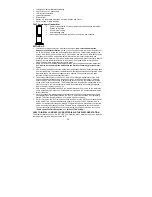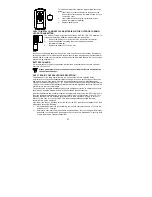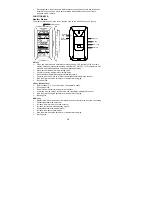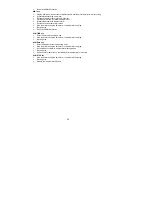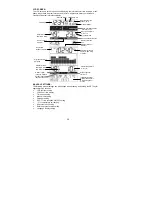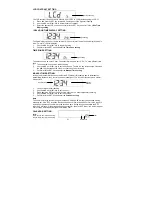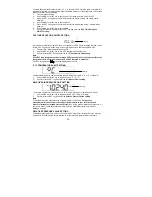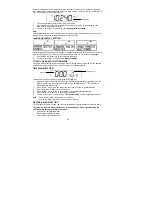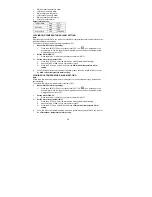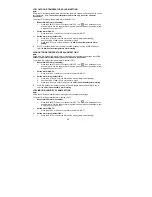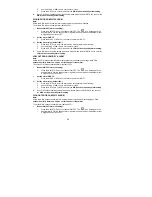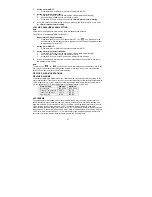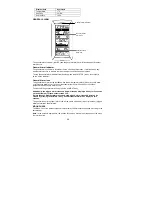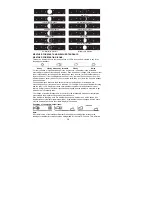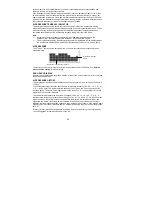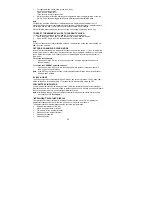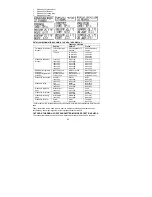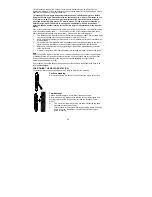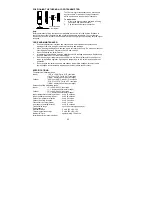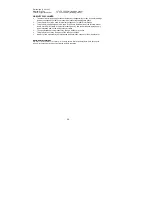
40
sufficient time for the Weather Station to collect air pressure data at a constant altitude and
therefore result in a more accurate forecast.
If the Intelligent Weather Station is moved to another location significantly higher or lower than
its initial standing point (for example from the ground floor to the upper floors of a house), set
again the relative air pressure value, and discard the weather forecast for the next 12-24 hours.
By doing this, the Weather Station will not mistake the new location as being a possible change
in air-pressure when really it is due to the slight change of altitude.
AIR PRESSURE TENDENCY INDICATOR
The air pressure tendency indicators are located on the left side of the air pressure display,
below the Weather icons, and they work independently from the Weather forecast icons. The air
pressure tendency indicator pointing upward or downward directions is displayed based on
comparing the difference of the air pressure recorded during a full hour time frame.
Note:
•
A single air pressure tendency indicator will point upward or downward when the
difference in air pressure registered is between 1 and 3hPa within 4 hours.
•
Two air pressure tendency indicators pointing upward or downward will be displayed when
the air pressure difference has increased or decreased by 3hPa or more within 4 hours.
AIR PRESSURE
The 5
th
and 6
th
sections of the sections of the LCD show the relative air pressure and the air
pressure history.
The reference relative air pressure (hPa) can be set between 960 to 1040hPa. See “
Relative
pressure value setting
” in manual setting.
BAR GRAPH DISPLAY
Depending on programming conditions, display of the history of air pressure in form of a graph
consisting of vertical bars.
AIR PRESSURE HISTORY
The bar graph of the electronic barometer shows the air pressure history of the past 36 hours in
17 steps.
The horizontal axis represents the last 36 hours air pressure recording (-36, -24, -12, -6, -5, -4, -
3, -2, -1, and 0 hour). The bars are plotted at each of the 17 steps and give the trend over the
recorded period. The scale on the right compares the result. The
″
0
″
in the middle of this scale
determines the current air pressure.
The vertical axis represents the air pressure changes in hPa (+8, +6, +4, +2, 0, -2, -4, -8. “0”
represents the current air pressure). Each change (±1, ±2, ±3, ±4, ±5, ±6, ±7,
±
8; the odd values
are not shown on the vertical axis but can be determined) shows in Hekto-Pascal (hPa), how
high or low the past air pressure was as compared to the current one. If the bars are rising it
indicates that the weather is getting better due to an increase in air pressure. If the bars go down
it indicates a drop of the air pressure and the weather is expected to get worse from the present
time
″
0
″
.
At every full hour the current air pressure is used as a basis for the display of a new graph bar.
The existing graph is then moved one bar to the left.
Air pressure over the last 12 hours
Air pressure changes
in hPa

